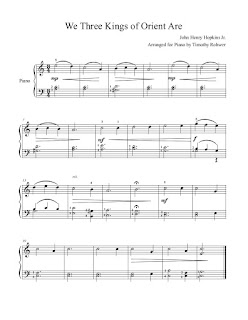Scary Bedtime Songs: Scary Mary, Zombie John, and Slinking Spiders
I recently took another job as an orchestra teacher. Seeing how much people have liked the harmonic exercise minor version of "Mary Had a Little Lamb" from a few years back, and knowing that my beginning orchestra would have a limited playing range, I decided to take the minor version of "Mary Had a Little Lamb" and orchestrate it for a beginning orchestra and a more advanced orchestra. To do this, I placed the main melody in an "A" part for Violin, Viola, and Cello. I then added harmony parts, Violin Part B, Viola and Violin Part C, Cello D, and Bass E. To have this become a more "official" piece, I expanded out the structure of the piece so that it would be an ABA structure for the section. Beyond that, I added two other movements using children's songs as the overall theme for a suite of songs, which I have called "Scary Bedtime Songs." The first movement is Scary Mary, the 2nd is Zombie John (taking inspiration from Gus...


